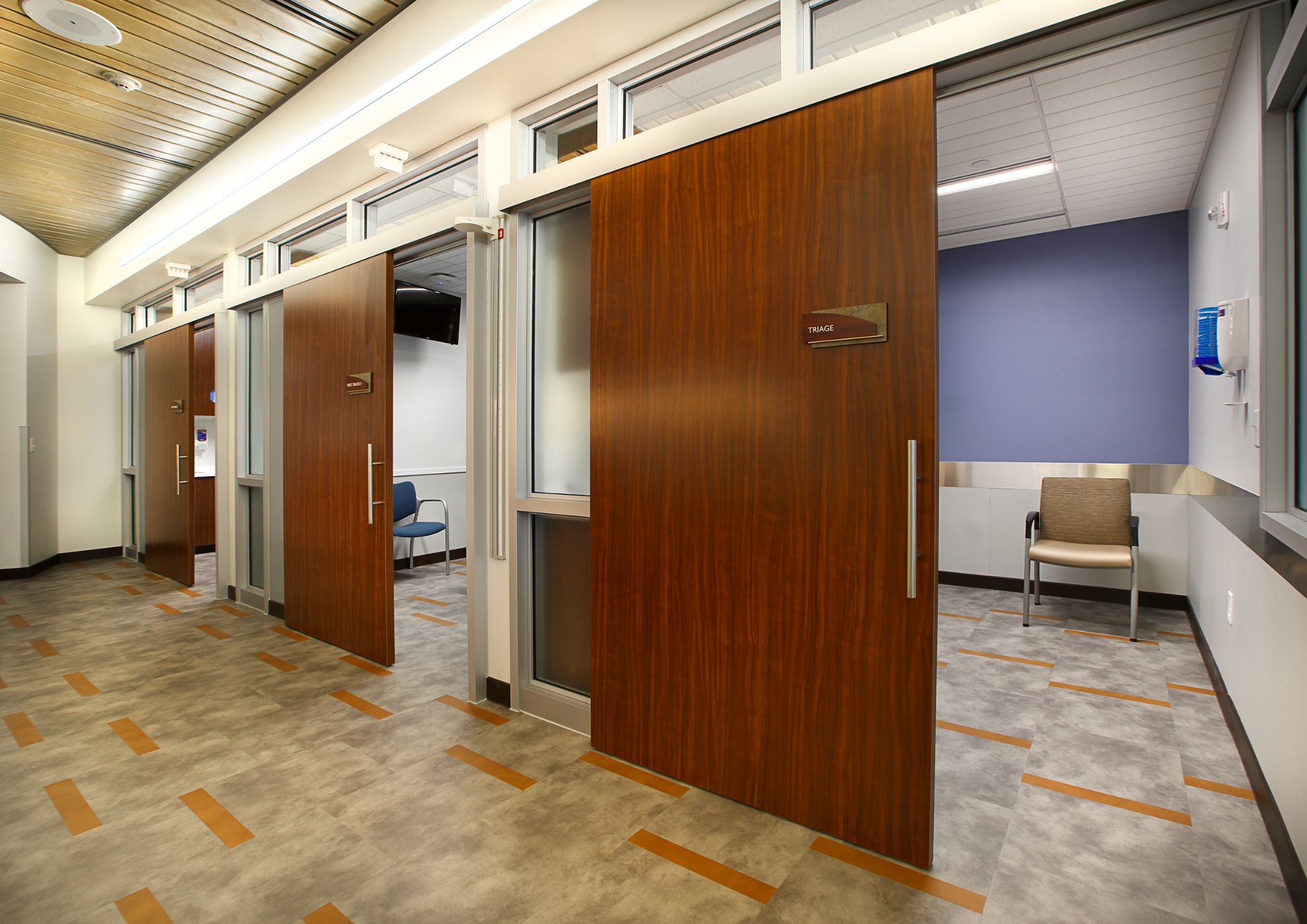
Currently, ADA standards state that “doorways shall have a minimum clear opening of 32 in. (815 mm) with the door open 90 degrees, measured between the face of the door and the opposite stop.” Design teams can use traditional swing doors to meet these criteria; however, it can prove challenging where space is limited. Consider cramped bathrooms and hospital rooms, where hallways are tight and square footage is at a premium.
Sliding door systems, commonly designed in the barn door style, generally fit the bill for ADA compliance standards, and can serve as a solution in occupancies of all types. The ADA barn doors are easier to maneuver around and through since occupants don’t have to get out of the way of the door swing. Although valuable, meeting clearance requirements is just the start of these door’s accessible design capabilities. Let’s go through a few ways that today’s interior commercial sliding door systems can meet the required ADA standards.
Hardware Compliance
One of the main ways that any kind of door, including AD Systems’ sliding doors, can maintain compliance with accessibility laws is through their handle clearance. Door handles need to be accessible to occupants of a building, including those that reside in a wheelchair. To ensure building occupants can reach the door handle with ease, AD Systems’ interior sliding doors are available with proper handle clearances. Clear openings and no trip hazards are also important when it comes to the hardware system surrounding a door. Innovative sliding door systems go beyond efficient use of space, improving access for patient and staff needs. A good example of this is in the construction of Houston Methodist Hospital’s Paula and Joseph C. “Rusty” Walter III Tower. In this project, building professionals specified AD Systems surface-mounted, top-hung ADA compliant barn door style sliding doors. The benefit of this ADA barn door style orientation is the doors slide along heavy-duty, quiet rollers instead of traditional floor tracks that can cause trip hazards.
One Step Further
Another step some interior commercial sliding door system manufacturers are taking to improve accessibility is to offer doors with self-closing options. Doors with this capability close automatically. This is especially important in hospitals or healthcare centers as it reduces strain on occupants with limited mobility and nursing staff carrying heavy loads. AD Systems has the option for builders to specify self-closer capabilities for their ExamSlide™ doors. This sliding door system helps occupants to move freely throughout the space without hindrance while providing a durable safe environment for patients and staff.
Next Level Accessibility
Automation is the next level way for interior sliding door systems to meet ADA accessibility standards. This type of door system is now available through AD Systems, but it must be specified at the time of the order. With this option, design teams elect to add a low-energy automatic operator with safety sensors to interior ADA compliant barn door sliding door systems. This is especially helpful to those with disabilities, as all they have to do is wave or press a button to activate the door. Some door systems even have the option of sensing when occupants are near to open and close.
Interested in learning more about how commercial interior sliding door systems can improve accessible design? See examples of how AD Systems doors have met ADA compliancy standards and building codes in case studies here.







